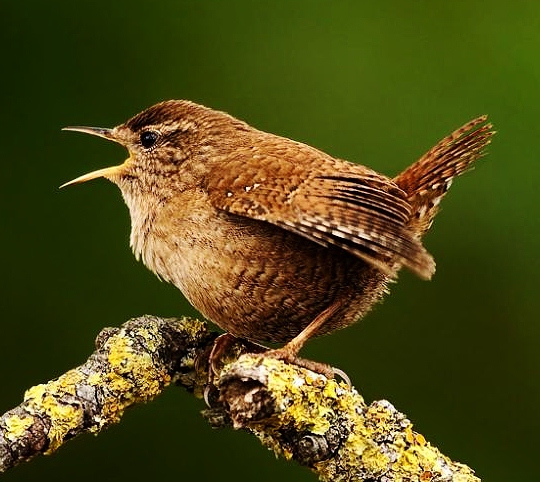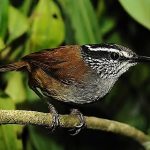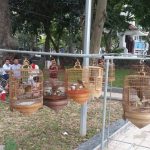Winter wren

 |
| Photo by Fabio Giarrizzo (Internet Bird Collection) |
Common name:
winter wren (en); carriça (pt); troglodyte mignon (fr); chochín (es); zaunkönig (de)
Taxonomy:
Order Passeriformes
Family Troglodytidae
Range:
These birds are widely distributed in Europe, North Africa, Asia and North America, being found across Europe, including Iceland and the British Isles, into Russia, the Middle East and southern Asia, and through the Aleutian islands into Alaska, Canada and south along the eastern and western coasts of the United States down to Mexico.
Size:
The winter wren is 8-12 cm long and has a wingspan of 12-16 cm. They weigh 8-12 g.
Habitat:
They are found in a wide range of habitats, including coniferous and deciduous forests, riparian vegetation, scrubland, farmland, moorland, heaths, and urban parks and gardens. These birds have beed recorded from sea level up to an altitude of 4.600 m.
Diet:
Winter wrens are insectivorous, taking various insects and their larvae, but also spiders, millipedes and sometimes snails.
Breeding:
These birds breed in March-June. They build a dome-shaped nest in a hole or crevice, using grasses, moss, lichens and roots, and line it with feathers. The female lays 1-9 white eggs with reddish-brown eggs, which she incubates alone for 16 days. The chicks are fed by both parents and fledge 14-19 days after hatching, but will continue to receive food from the parents for another 2-3 weeks.
Conservation:
IUCN status – LC
The winter wren has an extremely large breeding range and a global population estimated at 200-1.000 million individuals. The population trend is difficult to determine because of uncertainty over the impacts of habitat modification on population sizes, but in Europe and North america populations seem to have undergone a moderate increase.
































